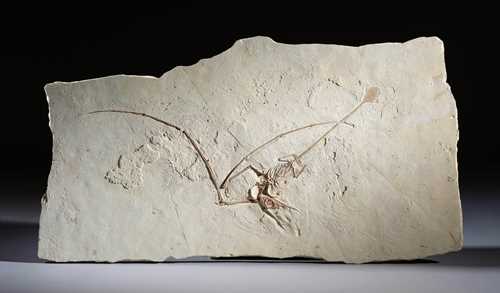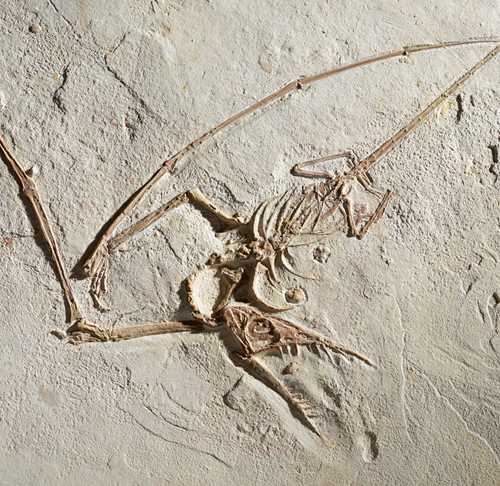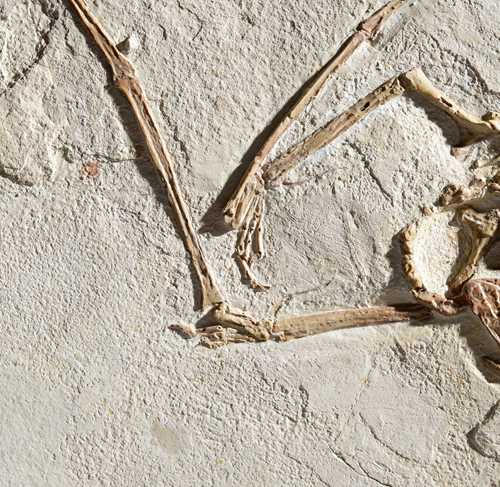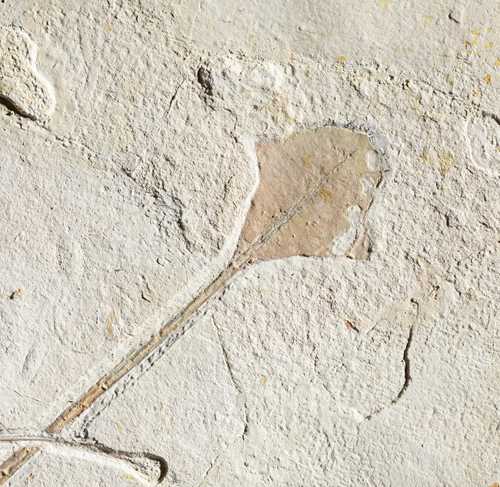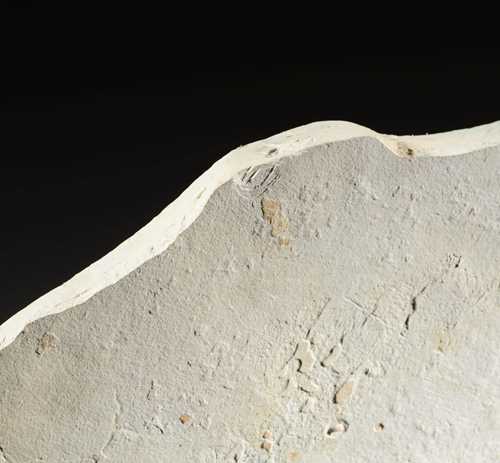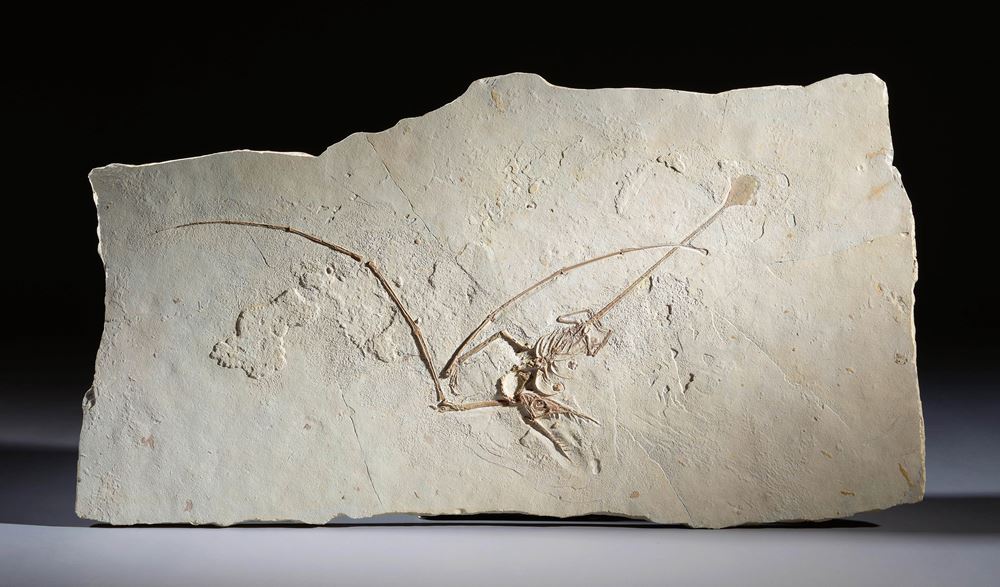
拍品 923* - S18 Out of This World - Dienstag, 18. April 2023, 04.00 PM
PTEROSAUR FOSSIL
Ramphorhynchus gemmingi
Late Jurassic, 145–164 million years
Eichstaett, Germany, Solnhofen Limestone
124 × 65 cm (slab)
88 × 43 cm (fossil)
Late Jurassic, 145–164 million years
Eichstaett, Germany, Solnhofen Limestone
124 × 65 cm (slab)
88 × 43 cm (fossil)
This pterosaur could reach a wingspan of up to 6 ft (1.8 m) and had a long, straight tail about 8 in (20 cm) long that ended in a diamond-shaped rudder. This was probably used for steering during flight. Rhamphorhynchus is the ‘type species’ and thus one of the best-known representatives of the Rhamphorhynchinae. It had a long, narrow jaw with pointed, forward-protruding teeth. The lower jaw was slightly curved upwards in front. The teeth were probably specifically designed to catch and hold fish. Some fossil finds still show imprints of fish scales and bones in the area of the stomach.
One detail about Rhamphorhynchus and its cousins that sets it apart from other fossils of ancient reptiles are the spectacularly preserved specimens, often discovered at the Solnhofen fossil beds in Germany. Some of this pterosaur's remains are so complete that they display not only its very detailed bone structure, but the outlines of its internal organs as well. The only creature to have left comparably intact remains was another Solnhofen discovery, Archaeopteryx – which, unlike Rhamphorhynchus, was technically a dinosaur that occupied a place on the evolutionary line leading to the first prehistoric birds.
The original discovery and classification of Rhamphorhynchus is a case study in well-meaning confusion. After it was unearthed in 1825, this pterosaur was classified as a species of Pterodactylus, which at the time was also known by the now-discarded genus name Ornithocephalus (‘bird head’). Twenty years later, Ornithocephalus reverted to Pterodactylus, and in 1861 the famous British naturalist Richard Owen promoted P. muensteri to the genus Rhamphorhynchus.
Presented here is an exceptional specimen of a Ramphorhynchus, in an attractive stone slab. The large amount of original bone material and the overall quality of preparation makes this example a fossil treat to behold.
Source:
Strauss, Bob. ‘Rhamphorhynchus.’ ThoughtCo, Feb. 16, 2021, thoughtco.com/rhamphorhynchus-1091599.
One detail about Rhamphorhynchus and its cousins that sets it apart from other fossils of ancient reptiles are the spectacularly preserved specimens, often discovered at the Solnhofen fossil beds in Germany. Some of this pterosaur's remains are so complete that they display not only its very detailed bone structure, but the outlines of its internal organs as well. The only creature to have left comparably intact remains was another Solnhofen discovery, Archaeopteryx – which, unlike Rhamphorhynchus, was technically a dinosaur that occupied a place on the evolutionary line leading to the first prehistoric birds.
The original discovery and classification of Rhamphorhynchus is a case study in well-meaning confusion. After it was unearthed in 1825, this pterosaur was classified as a species of Pterodactylus, which at the time was also known by the now-discarded genus name Ornithocephalus (‘bird head’). Twenty years later, Ornithocephalus reverted to Pterodactylus, and in 1861 the famous British naturalist Richard Owen promoted P. muensteri to the genus Rhamphorhynchus.
Presented here is an exceptional specimen of a Ramphorhynchus, in an attractive stone slab. The large amount of original bone material and the overall quality of preparation makes this example a fossil treat to behold.
Source:
Strauss, Bob. ‘Rhamphorhynchus.’ ThoughtCo, Feb. 16, 2021, thoughtco.com/rhamphorhynchus-1091599.
CHF 70 000 / 90 000 | (€ 72 160 / 92 780)
以瑞士法郎銷售 CHF 122 300 (包含買家佣金)
所有信息随时可能更改。

